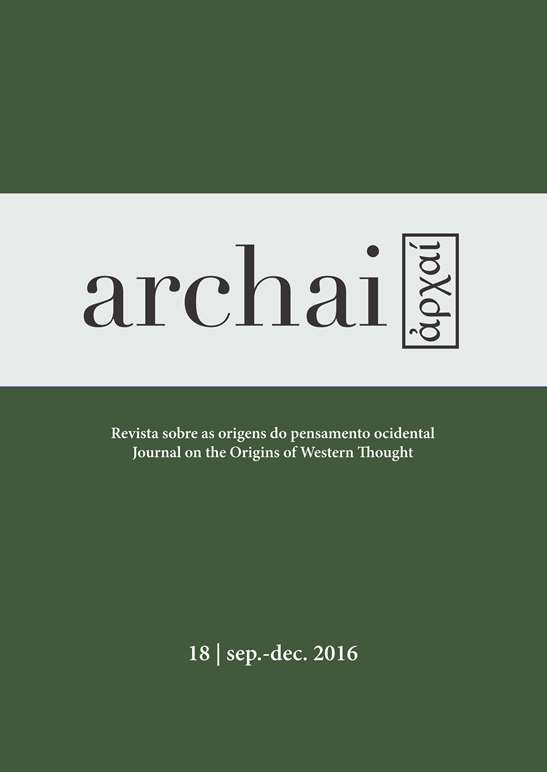Enti Inesistenti:
phantasmata in Platone
DOI:
https://doi.org/10.14195/1984-249X_18_3Keywords:
immagine (εἴδωλον), immagine apparente (φάντασμα), falsità , inganno - Imagine (εἴδωλον), apparent image (φάντασμα), untruth, betrayalAbstract
One of the debated topics about Plato’s Sophist is the distinction between original and image, more precisely, the
difference among the original, the true and the false image. It’s
only to justify this classification that the philosopher addresses
to the demonstration of not”‘being and presents, right from the
beginning of the Dialogue, the dualism ‘reality”‘appearance’. The
aim of the present paper is creating a relationship between the
concepts of not”‘being and appearance, as they are presented
in the Sophist, to legitimize the existence of beings that are, although they are not real nor true, the phantasmata. This sort of beings is different from the other kind of image, because they
are essentially misleading.
Keywords: Imagine (εἴδωλον), apparent image (φάντασμα), untruth, betrayal.
Downloads
Downloads
Published
How to Cite
Issue
Section
License
Given the public access policy of the journal, the use of the published texts is free, with the obligation of recognizing the original authorship and the first publication in this journal. The authors of the published contributions are entirely and exclusively responsible for their contents.
1. The authors authorize the publication of the article in this journal.
2. The authors guarantee that the contribution is original, and take full responsibility for its content in case of impugnation by third parties.
3. The authors guarantee that the contribution is not under evaluation in another journal.
4. The authors keep the copyright and convey to the journal the right of first publication, the work being licensed under a Creative Commons Attribution License-BY.
5. The authors are allowed and stimulated to publicize and distribute their work on-line after the publication in the journal.
6. The authors of the approved works authorize the journal to distribute their content, after publication, for reproduction in content indexes, virtual libraries and similars.
7. The editors reserve the right to make adjustments to the text and to adequate the article to the editorial rules of the journal.



